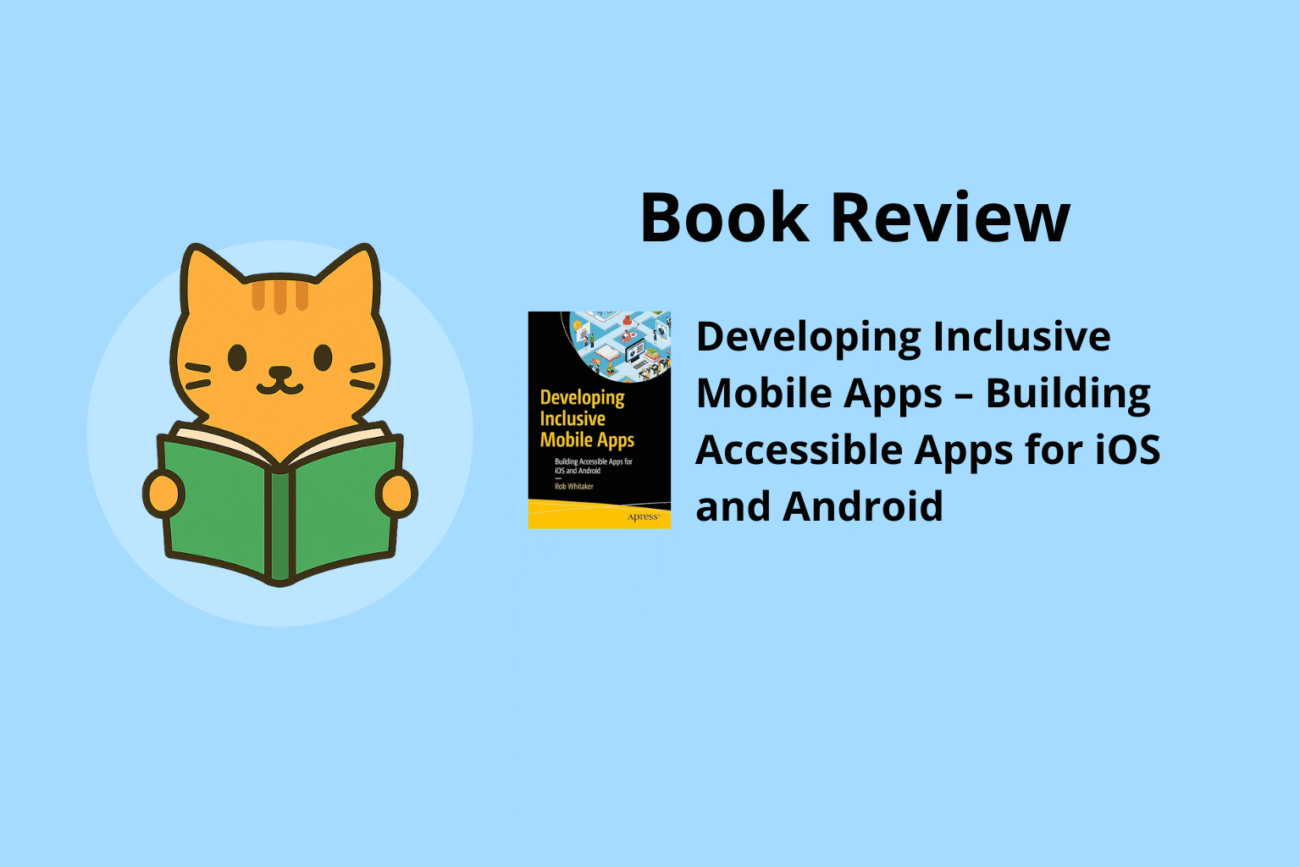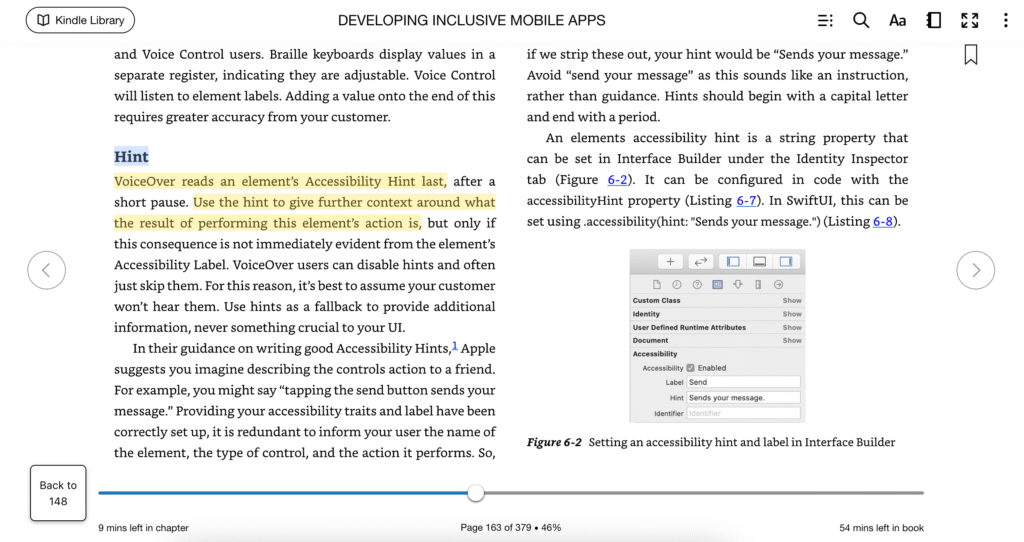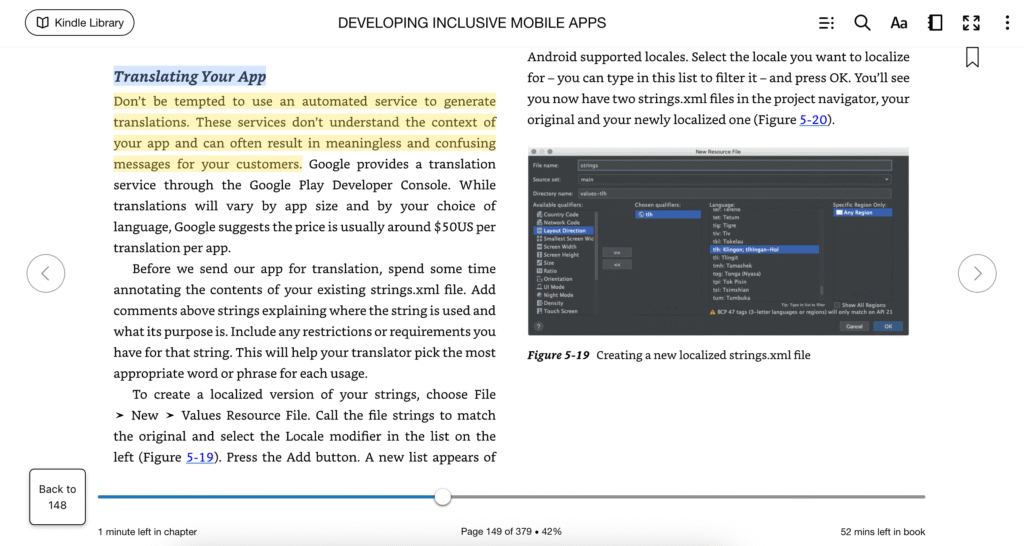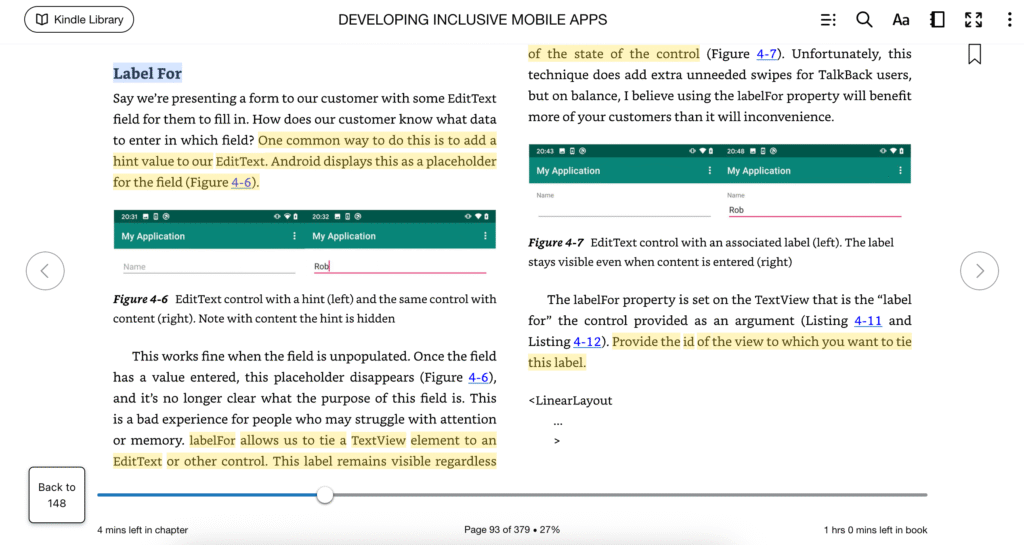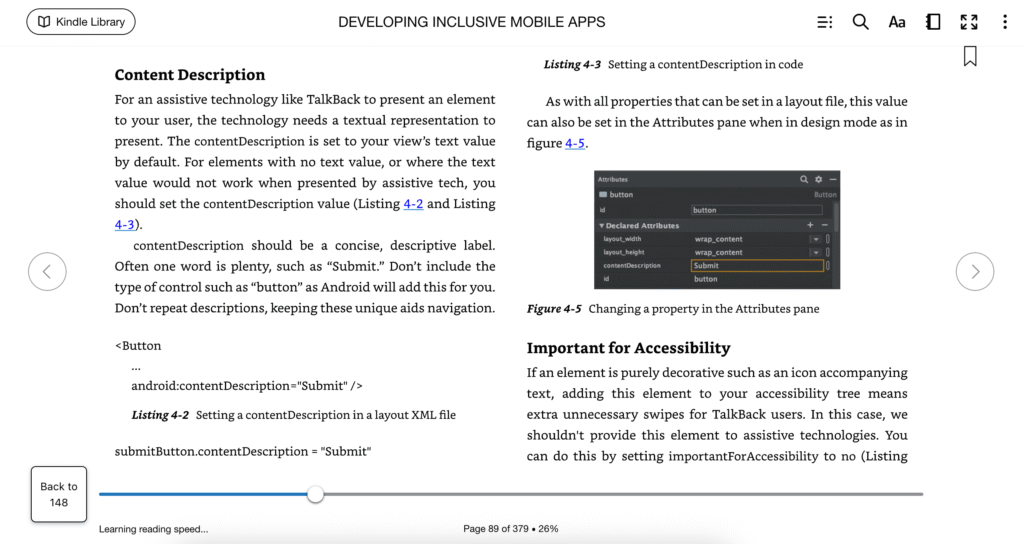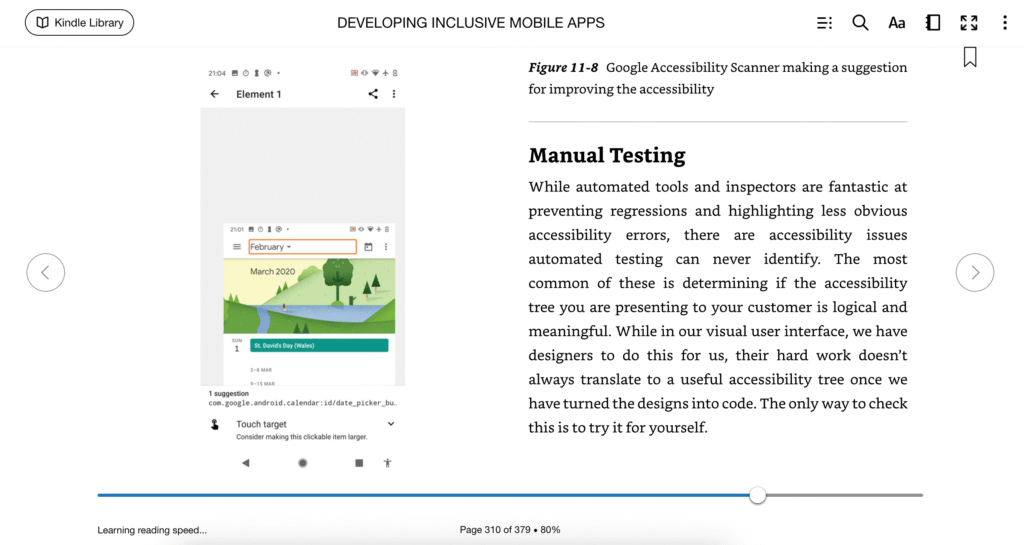Hi 😻
For years, I’ve been testing mobile apps not only from the functional side but also focusing on accessibility. I’ve checked how apps behave with TalkBack and VoiceOver, if buttons are labeled properly, if navigation is logical, or if color contrast is good enough, and even how the application works when using only a keyboard instead of touch gestures.
One thing I’ve always noticed, when it comes to web accessibility, there are plenty of resources: books, tutorials, WCAG guidelines. But for mobile apps, there’s still not that much. Most of the time we, testers and developers, learn by trial and error, by digging through Google or Apple documentation.
That’s why I was really happy when I found Developing Inclusive Mobile Apps: Building Accessible Apps for iOS and Android by Rob Whitaker. I got it on my Kindle (though there’s also a paper edition), and honestly, it quickly became one of the most useful books I’ve read in a long time.
What’s inside the book?
What I liked the most is that this book is practical. It doesn’t just say “you should care about accessibility” (we all know that already). It shows how to do it, step by step.
- You’ll find code examples for both Android and iOS. For example, how to add android:contentDescription to an image so TalkBack reads it correctly, or how to use accessibilityLabel in Swift so VoiceOver announces the right thing.
- There are tips for developers and testers. The authors don’t just say “add labels,” but explain why labels matter, how screen readers read them out loud, and why names like button1 or image2 are completely useless for real users.
- There’s a lot about testing. The book explains how to check apps with tools like Accessibility Scanner on Android or Accessibility Inspector on iOS, and how to look at the Accessibility Tree to understand how your app is exposed to assistive technology.
- It also touches on design details: things like proper color contrast, making sure buttons are big enough to tap, and making navigation logical. Small details, but they make a huge difference.
While reading the book, I highlighted some pages that show how practical and hands-on the content is. Below are a few examples:
Why is this helpful for testers?
As testers, we’re often the ones who have to explain to developers why something doesn’t work for TalkBack or VoiceOver. And this book really helps with that.
Now I can say things like: “Look, if you add this property to the Android XML, TalkBack will finally read the button correctly”. Or I can show an iOS developer exactly how to set the right accessibility trait for a custom element.
The book also gave me a kind of checklist in my head:
- Did I check labels?
- Did I try screen readers in practice?
- Are interactive elements big enough?
- Is the order of navigation logical?
My experience reading it
I went into this book thinking, “Okay, I already know most of this. I’ve been testing mobile accessibility for years.” But I was surprised. There were many moments when I thought: “Oh, I didn’t know that! I can use it right away in my next project.”
For example, I learned how to properly manage app localization using strings.xml. This may sound basic, but handling text resources correctly is key not only for supporting multiple languages but also for making sure accessibility tools read elements in the right way. It’s a detail that can easily be overlooked, yet it has a huge impact on how inclusive an app really is.
Also, the chapter on testing included some things that were new to me. It gave me practical techniques and ideas that will definitely help me improve the way I test the accessibility of mobile applications in the future
Final thoughts
Mobile accessibility is still not as well-documented as web accessibility, and resources are limited. That’s why this book is so valuable.
It’s simple, practical, and full of examples. It doesn’t overwhelm you with theory but gives you concrete things you can test, build, and improve in your apps.
So if you’re a tester, developer, or designer working with mobile apps, I really recommend it. I’ve been in this field for a long time, and still, I learned new things that I can bring into my daily work.
Accessibility is about people, not checklists, and this book is a great reminder of that.

